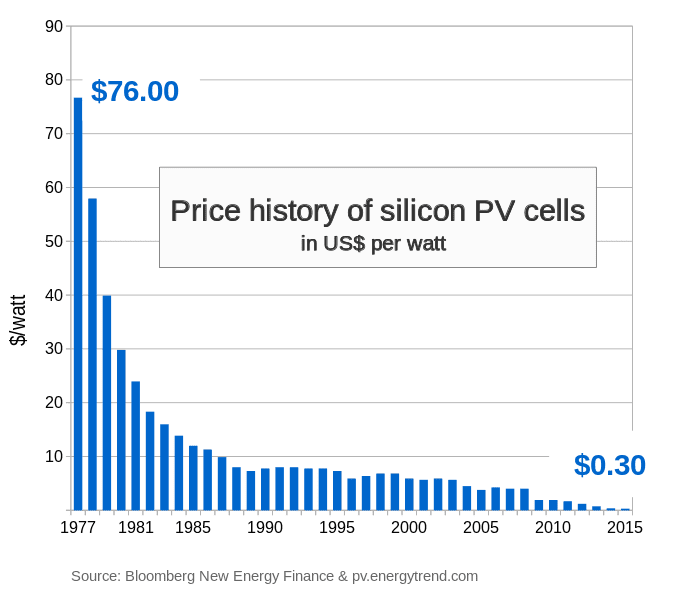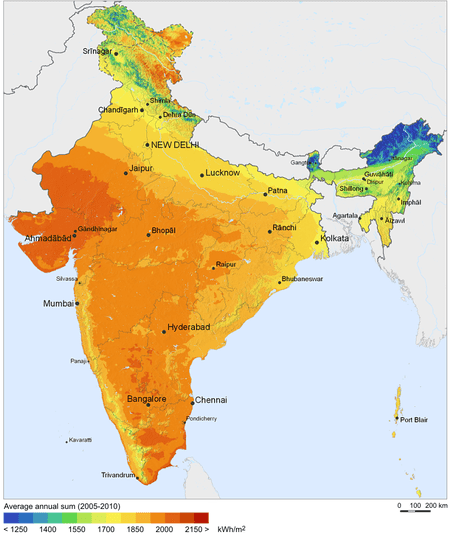We may be reaching a historic moment, where solar could become the cheapest form of energy in the world’s second-most populous country.

India is set to become a major solar energy producer, as per their 15-point action plan. It’s quite surprising to see how quickly they’ve grown this market, as they’re now on track to deliver more than 100 gigawatts of solar power by 2022 – that’s 40% of their existing installed capacity.
The country’s energy minister, Piyush Goyal, made an encouraging statement for renewable energy, saying that he solar has effectively become cheaper than coal, the traditional alternative:
“I think a new coal plant would give you costlier power than a solar plant,” he said. “Of course there are challenges of 24/7 power. We accept all of that – but we have been able to come up with a solar-based long term vision that is not subsidy based.”
This is incredible when you consider that India installed its first 5MW solar project in 2011, just five years ago. The government is supporting all sorts of clean energy (especially wind and solar), they’ve been a key player in the climate negotiations in Paris, and they’re not afraid to make massive investments. The Ministry of New and Renewable Energy provides 70 percent subsidy on the installation cost of a solar photovoltaic power plant in the north-eastern states and 30 percentage subsidy on other regions.
Of course, they are doing so much specifically because it’s cost effective – or will become so in the very near future. In the past financial year, nearly 20GW of solar capacity has been approved by the government, with a further 14GW planned through 2016 according to the Union Budget. Also, capital costs for energy have dropped 60% in the past years according to Deutsche Bank, which said in a report last year solar investment would overtake coal by 2020. Solar is becoming more and more attractive.

The thing is, coal consumption will likely go up in India, in line with total energy consumption. There are still plenty of areas which have limited or no access to electricity, and providing them with electricity will likely push up coal consumption. Since last year, over 6000 villages have been electrified, mostly with conventional energy. But more and more villages are relying on wind and solar for electricity and this is very encouraging news. Coal consumption is expected to peak in a few years, which for a developing country like India is remarkable – especially when you consider the huge population and relative lack of infrastructure. This sets an example for other developing countries, and sadly, for some developed countries as well. Goyal was quite direct in his statements, blaming the Western countries for not doing their part in the fight against climate change.
“I sincerely believe that what the West is doing in this respect is anti-development and anti the fight against climate change,” he said, accusing rich countries of charging too much for clean technology.
India benefitted from a massive influx of technology from other countries, and they’ve announced plans to continue this cycle, providing their expertise to any poor country that needed help, promising it would “never charge a single rupee”. The levels of investment and growth of renewable energy is still a delicate discussion between the rich and the developing countries. Developing countries make a strong case that the developed countries became developed by emitting so much, and ask for help. Despite some encouraging steps taken in and outside the Paris agreement, the flow of investments and technology has been relatively slow in many areas of the world.
Of course, it’s not all rosy in India. They’re still developing, they’re still dealing with corruption and a lack of funds like many other countries are. But they are taking strides in the right direction, and their big move into renewables is already paying off.






